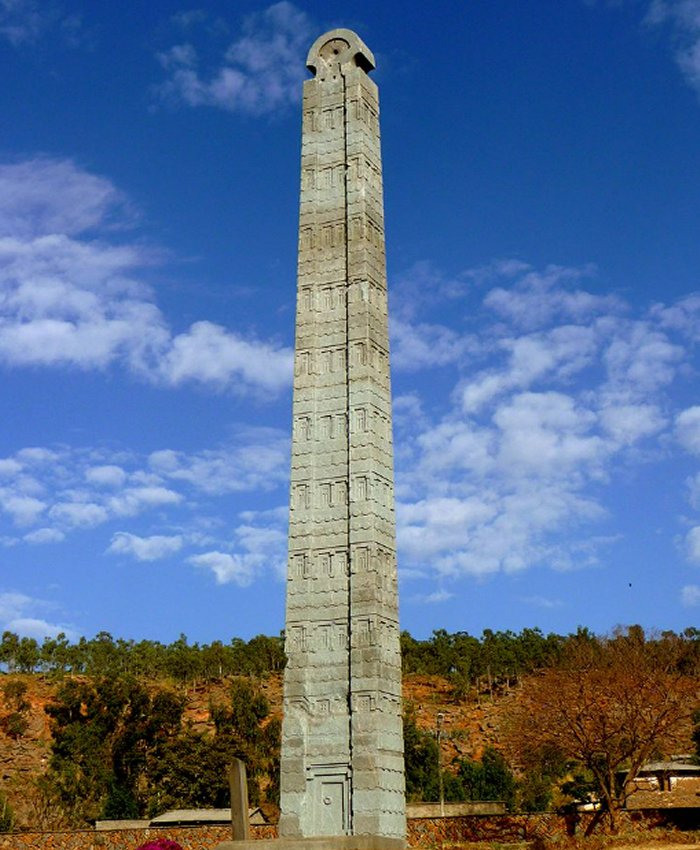Axum: Mysterious Megalithic Towering Obelisks In Ethiopia
A. Sutherland - AncientPages.com - The Kingdom of Aksum (Axum), also widely known as the Aksumite Empire, was an ancient civilization developed in one of the oldest continuously inhabited parts of the world – Ethiopia.
Many ancient references to this remarkable kingdom can be found in the famous works of Homer and Herodotus.
The Aksumite Empire, which existed from about 100 to 940 AD and had its height about 1st century AD, was a place of commerce and participated in trade contacts between the Roman Empire and ancient India.
The Aksumites controlled the entire region south of the Levant.
In her book 'Ethiopia - Culture Smart: The Essential Guide to Customs & Culture,' Sarah Howard writes:
"...Signs of the first civilization in the area appeared halfway through the first millennium BCE. The stone palaces and buildings at Yeha, twenty miles north of Axum, along with numerous other sites, reveal a rich culture very similar to that in Saba, southern Arabia, in their religion, language, and architecture.
By 300 BCE, the Kingdom of Axum was born—a rich trading nation with a foot on both sides of the Red Sea, routes to Egypt both inland and by the Red Sea, and trails to the south, where valuable commodities could be obtained.
Axum's obelisk- a false door. Image credit: jammingglobal.com
The Axumites spoke a Semitic language similar to the liturgical language of Ge'ez, which they originally wrote in a Sabaean script; they worshipped many gods with Sabaean names, also identified with Greek gods, and they minted coins.
They built impressive stone palaces and erected tall stone stelae (pillars, or vertical tablets)—one of them, at 520 tons and 108 feet (33 meters) high, is the largest stone object known to have been worked by men...."
The region the Aksumites inhabited was relatively remote. This location prevented them from conquest, in contrast to other civilizations in Mesopotamia and the Near East located at the crossroads of Asia, Europe, and Africa and surrounded by several competing and often dangerous states.
The Aksumites developed a high level of craftsmanship and were the only African culture credited for minting coins, mining precious metals, and producing unique artifacts and pottery.
The Rome Stele (also known as the Aksum Obelisk) in Aksum (Tigray Region, Ethiopia). Image credit: Ondrej Zvacek - CC BY 2.5
These ancient people also created their alphabet. However, one of their most prominent achievements is creating magnificent and gigantic obelisks honoring the kingdom's emperors. The central towering obelisk of Axum is believed to be 1,700 years old.
It is made of granite and weighs 160 tons. Its ornamentation consists of two false doors at the monument's base and a window-like decoration on the obelisk's all sides.
These gigantic structures - skillfully fastened beneath the ground – were meant to symbolize the prosperity of the great civilization that prospered for a millennium. They may have also been created for religious purposes before Christianity appeared in the region.
The erection of such enormous and perfectly cut monuments must have been difficult for their builders. Could the Aksumites be credited for this impressive job, as they are credited for mining metals, minting coins, and making pottery?
Could the obelisks, at least some of them, be much older and precede the existence of the Aksumite Empire?
Written by – A. Sutherland AncientPages.com Staff Writer
Updated on December 08, 2022
Copyright © AncientPages.com All rights reserved. This material may not be published, broadcast, rewritten or redistributed in whole or part without the express written permission of AncientPages.com
Expand for referencesReferences:
Howard S. 'Ethiopia - Culture Smart: The Essential Guide to Customs & Culture
More From Ancient Pages
-
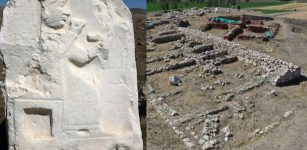 Ancient Hittite Temple Dedicated To The Goddess Of Night To Be Unearthed
Archaeology | Oct 2, 2021
Ancient Hittite Temple Dedicated To The Goddess Of Night To Be Unearthed
Archaeology | Oct 2, 2021 -
 Ancient City Machu Picchu Was Originally Called Huayna Picchu By The Incas – Study Of The Name Reveals
Archaeology | Mar 23, 2022
Ancient City Machu Picchu Was Originally Called Huayna Picchu By The Incas – Study Of The Name Reveals
Archaeology | Mar 23, 2022 -
 Dodecahedron: Sophisticated Ancient Device Found In Europe And Asia
Artifacts | May 14, 2024
Dodecahedron: Sophisticated Ancient Device Found In Europe And Asia
Artifacts | May 14, 2024 -
 Supay: God Of Death And Underworld And Ruler Over Race Of Demons According To Inca Beliefs
Featured Stories | Jun 7, 2020
Supay: God Of Death And Underworld And Ruler Over Race Of Demons According To Inca Beliefs
Featured Stories | Jun 7, 2020 -
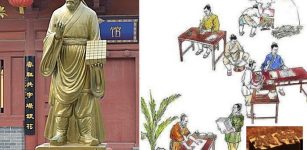 Chinese Invention: World’s First Known Movable Type Printing
Ancient History Facts | Dec 30, 2014
Chinese Invention: World’s First Known Movable Type Printing
Ancient History Facts | Dec 30, 2014 -
 Visit The Palace Where Alexander The Great Was Born In Pella
Archaeology | Oct 21, 2020
Visit The Palace Where Alexander The Great Was Born In Pella
Archaeology | Oct 21, 2020 -
 Viking Grave Discovered In The Middle Of Oslo, Norway
Archaeology | Dec 23, 2022
Viking Grave Discovered In The Middle Of Oslo, Norway
Archaeology | Dec 23, 2022 -
 First Detailed Academic Study Of East African Maritime Traditions Shows Changes In Boatbuilding
Archaeology | May 11, 2022
First Detailed Academic Study Of East African Maritime Traditions Shows Changes In Boatbuilding
Archaeology | May 11, 2022 -
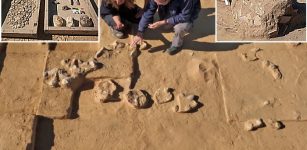 Ostrich Eggs Dated More Than 4,000 Years Discovered In Negev Desert Of Southern Israel
Archaeology | Jan 13, 2023
Ostrich Eggs Dated More Than 4,000 Years Discovered In Negev Desert Of Southern Israel
Archaeology | Jan 13, 2023 -
 Two 19th Dynasty Royal Statues Unearthed At Ancient Site Of Heliopolis, Cairo, Egypt
Archaeology | Mar 11, 2017
Two 19th Dynasty Royal Statues Unearthed At Ancient Site Of Heliopolis, Cairo, Egypt
Archaeology | Mar 11, 2017 -
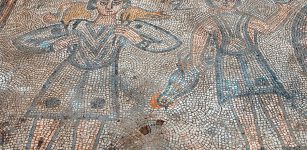 Mosaics Discovered In 1,600-Year-Old Church In Mardin Province,Turkey
Archaeology | Sep 22, 2020
Mosaics Discovered In 1,600-Year-Old Church In Mardin Province,Turkey
Archaeology | Sep 22, 2020 -
 Study Traces DNA Of Inca Emperors To Their Modern-Day Descendants
Archaeology | May 29, 2018
Study Traces DNA Of Inca Emperors To Their Modern-Day Descendants
Archaeology | May 29, 2018 -
 Ancient City Of Urkesh – Home Of Kumarbi – The Foremost Son Of Anu
Featured Stories | Aug 24, 2020
Ancient City Of Urkesh – Home Of Kumarbi – The Foremost Son Of Anu
Featured Stories | Aug 24, 2020 -
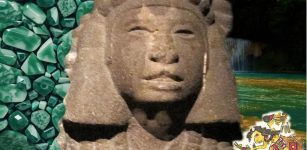 Chalchihuitlicue: Beautiful, Dangerous, Changeable And Unpredictable Water Goddess In Aztec Mythology
Featured Stories | Mar 20, 2024
Chalchihuitlicue: Beautiful, Dangerous, Changeable And Unpredictable Water Goddess In Aztec Mythology
Featured Stories | Mar 20, 2024 -
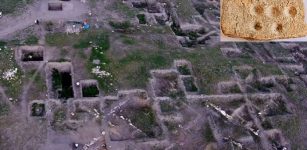 5,000-Year-Old Stone Paint Palette Unearthed In Küllüoba Mound
Archaeology | Sep 9, 2020
5,000-Year-Old Stone Paint Palette Unearthed In Küllüoba Mound
Archaeology | Sep 9, 2020 -
 Mysterious Mythical Tree Connected To Strange Islands Found By Ancient Explorers
Featured Stories | Apr 13, 2024
Mysterious Mythical Tree Connected To Strange Islands Found By Ancient Explorers
Featured Stories | Apr 13, 2024 -
 Prince Wenceslaus Of Bohemia Murdered On Order Of His Own Brother
Featured Stories | Nov 19, 2019
Prince Wenceslaus Of Bohemia Murdered On Order Of His Own Brother
Featured Stories | Nov 19, 2019 -
 Treasures From Ancient City Of Hippos-Sussita Displayed In Exhibition For The First Time
Archaeology | Jan 3, 2018
Treasures From Ancient City Of Hippos-Sussita Displayed In Exhibition For The First Time
Archaeology | Jan 3, 2018 -
 Hydra Greek Monster: Fearsome Multi-Headed Dragon That Inhabited Swamps Of Lerna
Featured Stories | Sep 20, 2019
Hydra Greek Monster: Fearsome Multi-Headed Dragon That Inhabited Swamps Of Lerna
Featured Stories | Sep 20, 2019 -
 Virtual Nubia: Sudan’s Medieval Monasteries Digitally Reconstructed By Polish Archaeologists
News | Oct 8, 2020
Virtual Nubia: Sudan’s Medieval Monasteries Digitally Reconstructed By Polish Archaeologists
News | Oct 8, 2020



